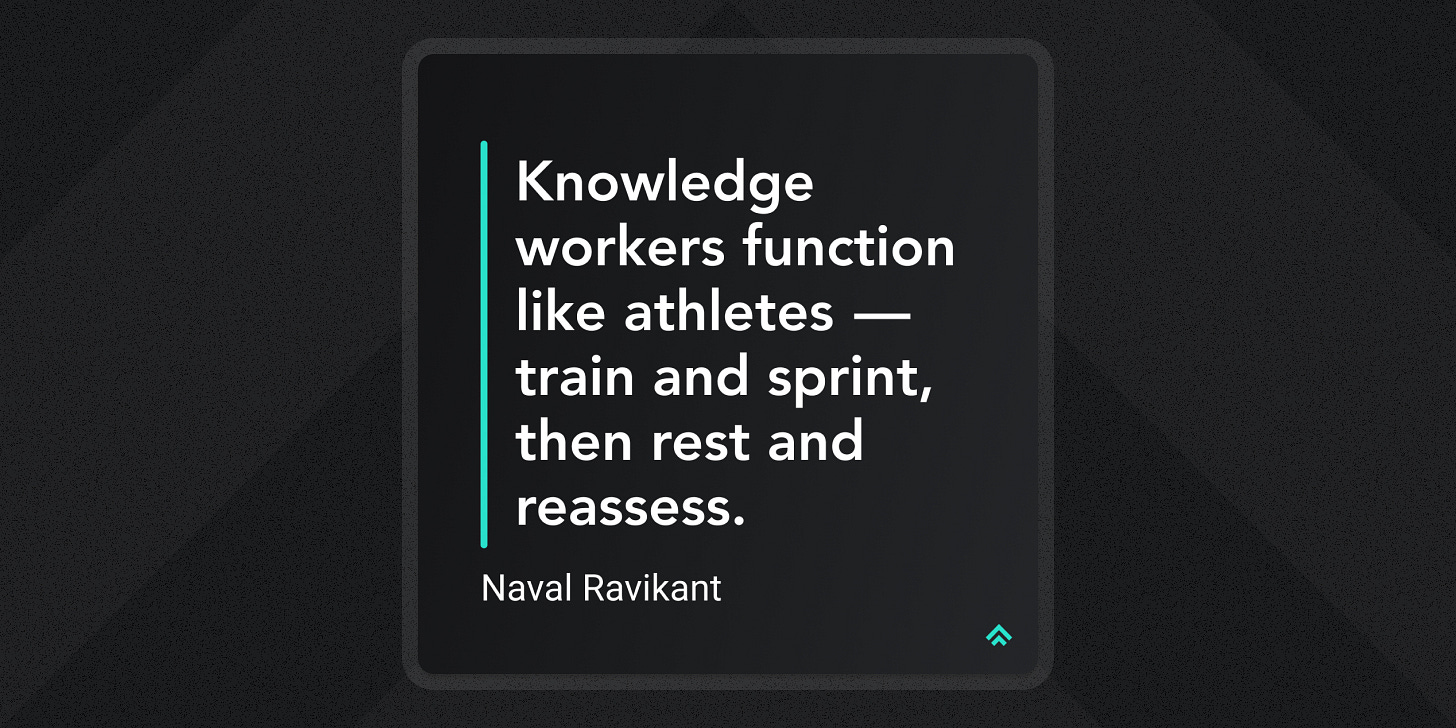Why Creatives Should Treat Their Work Like Athletic Training
Replacing the 40hr grind with deliberate cycles of focus and rest
Hello! I’m Pat and Better by Design is my newsletter sharing pragmatic insights for creative innovation through the lens of design. If you’re new here, join our growing tribe of design innovators!

Why are we still clocking in 40-hour work weeks?
Tailored for the industrial age, this time-centric model misses the mark for today’s creative and knowledge-based jobs. It presumes a linear relationship between the hours put in and the output that results; that one more hour of “work” will create one more output of similar value. However, the truth is that quality creative work doesn't behave like an assembly line; sound judgment is far more important than the mere capacity to create output.
Let's consider a different model: athletic training. Over seasons of training, great athletes put in tons of hours and hard work. But the best don't just work harder; they work smarter. They balance exertion with recovery, understanding that rest is not the enemy of growth—it's a crucial part of the process. The intentional combination of work plus recovery is what kickstarts the virtuous cycle of growth and better performance.
So what does the athletic training model look like in my creative work setting?
I aim for about 3-4 hours of focused work per day, then do my best to step away. Some days it’ll be more, others less, but on average, that’s what I need to make consistent progress. Anything beyond that mark starts to yield diminishing returns, much like how an athlete can overtrain. Sure, there are times when I’m neck-deep in a project and work non-stop, but I then balance those bursts with longer periods of deliberate rest and recovery.
Don't mistake this downtime for unproductive idleness. It's when my brain gets to synthesize ideas, getting ready to bring me that 'aha' moment the next time I sit down to focus. To non-creative people, that might sound like an excuse to avoid work but it’s really the opposite. If I don’t take that time to step away, it’s likely I won’t be able to create anything meaningful. I’ll just end up staring blankly into my screen making no progress which isn’t a good outcome for anyone.
The key to high-impact creative work isn't just to work harder; it's to cultivate a sustainable rhythm of focused work and meaningful rest. You can't force great work to happen; you can only set the stage for it to appear.
So, depending on your role:
If you're an Individual Contributor: Your team needs your best work, not your longest hours. Protect time for both focus and rest.
If you're a Manager: Be a role model. Encourage a culture where rest is viewed as an essential counterpart to work, not its adversary.
If you're an Entrepreneur or Artist: Create a sustainable work rhythm. Consistency will help you cross the finish line, not random bursts of all-nighters.
Let's think of our work more like athletes preparing for a competition. It's not just about the quantity of hours you put in; it’s about the quality and consistency of your training.
Until next time,
Pat 💚
If you got a little value in this post, consider subscribing, sharing, or following me on Twitter. If you got a lot of value I’d appreciate it if you bought me a coffee 😎☕️.




I have read about this way of working before but I always wonder if 3-4 hours of work includes the break or if it's just pure focused mins that gets counted.
Does working from 9 am - 1 pm with a 5-10 mins break every hour count as 4 hours of work?